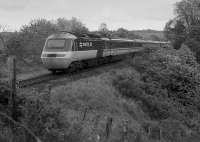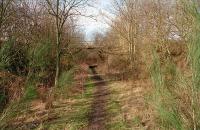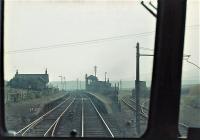Newburgh and North Fife Railway
Introduction
This line is closed. It was built to give the North British Railway a route to compete with the Caledonian Railway's Dundee and Perth Railway. The route was longer and not as well engineered so could not compete for speed, but did serve different locations on the south bank of the Tay. The line was single track but land was taken for a double track with road bridges built to take two tracks. A west to south curve at St Fort was to allow trains from St Andrews [2nd] to approach Perth. Traffic was disappointing. The Order of the Railway and Canal Commission of 28/03/1912 tells a story. This compelled the North British Railway to - fairly develop traffic on the Newburgh line and work all shortest route traffic via the line - increase the train service and through facilities - keep open the St Fort West Junction to St Fort South Junction curve - advertise the line including through route, season, tourist and excursion tickets - work goods traffic via the line, when it constitutes the shortest route The St Fort West Junction to St Fort South Junction closed in 1924. It closed to passengers in 1951 and as a through route in 1960.
Dates
| / /1897 | Newburgh and North Fife Railway Newburgh and North Fife Railway authorised. Facilities (what?) granted to the Caledonian Railway. |
| / /1906 | Newburgh and North Fife Railway Extension of time granted to complete works. |
| 25/01/1909 | Newburgh and North Fife Railway Line opened from Newburgh (Glenburnie Junction) to St Fort. |
| 28/03/1912 | Newburgh and North Fife Railway An Order of the Railway and Canal Commission compels the North British Railway to - fairly develop traffic on the Newburgh line and work all shortest route traffic via the line - increase the train service and through facilities - keep open the St Fort West Junction to St Fort South Junction curve - advertise the line including through route, season, tourist and excursion tickets - work goods traffic via the line, when it constitutes the shortest route |
| 01/01/1923 | North British Railway Edinburgh and Bathgate Railway Great North of Scotland Railway Forth and Clyde Junction Railway Kilsyth and Bonnybridge Railway Gifford and Garvald Railway Newburgh and North Fife Railway Lauder Light Railway Great Central Railway Grouped into London and North Eastern Railway. |
| 10/02/1951 | Newburgh and North Fife Railway Newburgh (Glenburnie Junction) to St Fort closed to passengers. (Alternative date 12/02/1951.) |
| 12/02/1951 | Newburgh and North Fife Railway Newburgh (Glenburnie Junction) to St Fort closed to passengers. (Alternative date 10/02/1951.) |
| 04/04/1960 | Newburgh and North Fife Railway Glenburnie Junction (excluded) to Lindores [2nd] (excluded) closed to freight. (Alternative date 13/05/1960.) |
| 13/05/1960 | Newburgh and North Fife Railway Glenburnie Junction (excluded) to Lindores [2nd] (excluded) closed to freight. (Alternative date 04/04/1960.) |
| 08/08/1964 | Newburgh and North Fife Railway St Fort (excluded) to Lindores [2nd] closed. (Alternative date 05/10/1964.) |
| 05/10/1964 | Newburgh and North Fife Railway St Fort (excluded) to Lindores [2nd] closed. (Alternative date 08/08/1964.) |
Locations along the line
These locations are along the line.
This was a short lived terminus before the line from Ladybank was extended west to Abernethy Road.
...
See also
Edinburgh and Northern Railway
The Edinburgh and Northern Railway, a double track line, was met by the single track Newburgh and North Fife Railway. The St Fort line doubled before joining and had a looped refuge siding.
...
See also
Edinburgh and Northern Railway
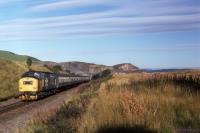
Graeme Blair 13/09/1986
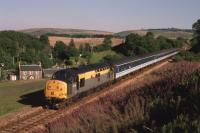
Graeme Blair 02/09/1994
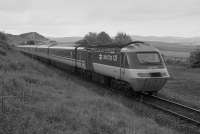
Bill Roberton //1988

Bill Roberton 20/02/2009
Array
More details
Brian Forbes /07/2010

...
Graeme Blair 06/11/2016
...
More detailsThis was a two platform station with a passing loop on a single track line. There was a goods yard on the west side which was approached from the south. The signal box closed in 1928 but a ground frame remained for the goods yard. The station closed to passengers in 1951. The line closed in 1964.
...
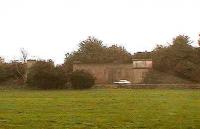
Brian Forbes 17/10/2006
Array
More detailsThis is small double track arched bridge over a minor road, crossing on an oblique. It is listed 'C'. It is typical of the line's bridges which were built in mass concrete.. The line was single track, the structures double track to allow future doubling which was never proceeded with. Many of the route's bridges were demolished, or were girder bridges, but this one remains standing. The arch is ...
More detailsThis was a two platform station with a passing loop. The main station building was on the eastbound platform. There was a water tank at the west end of the westbound platform. A goods yard was to the north, served from the east end. Catch points were at the east end of the westbound loop.
...
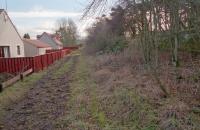
Ewan Crawford //1996

Brian Forbes 16/09/2009
At St Fort West Junction the Newburgh and North Fife Railway forked into two single tracks to join the Edinburgh and Northern Railway with a triangular junction. To the west of St Fort West Junction was a passing loop. The signal box was on the west side in the northern part of the passing loop.
...
Here the Newburgh and North Fife Railway met the Edinburgh and Northern Railway with a junction facing Leuchars. The line doubled before joining the main line. The signal box was in the 'V' of the junction, aligned with the main line. The junction, box and curve to St Fort West Junction closed in 1924.
...
See also
Tay Bridge and Associated Lines (North British Railway)
This was a two platform station on the double track approach to the Tay Bridge from Leuchars. The goods yard was on the west side, approached from the north. The signal box was on the east side opposite.
...
See also
Tay Bridge and Associated Lines (North British Railway)

Edinburgh - Aberdeen 170. ...
Brian Forbes 25/05/2007
Books
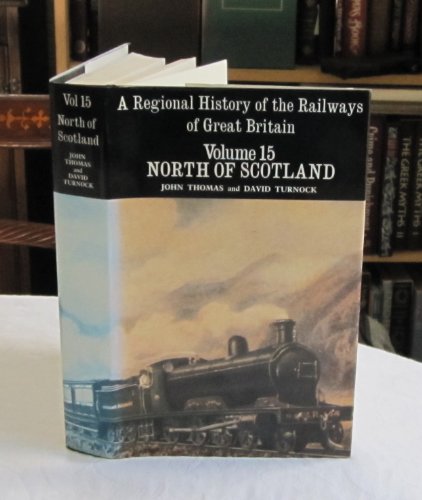 A Regional History of the Railways of Great Britain: The North of Scotland v. 15 (Regional railway history series) | 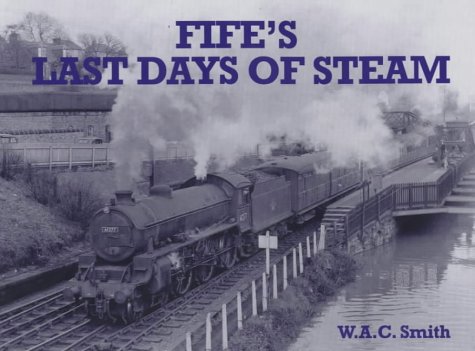 Fife's Last Days of Steam | 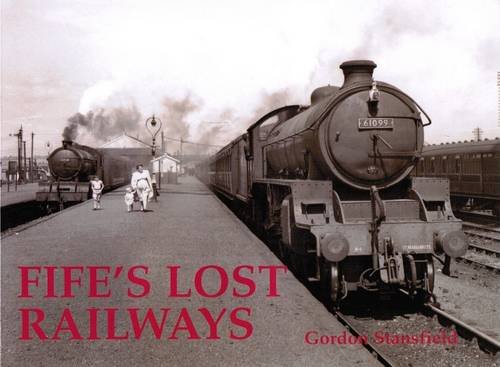 Fife's Lost Railways |










